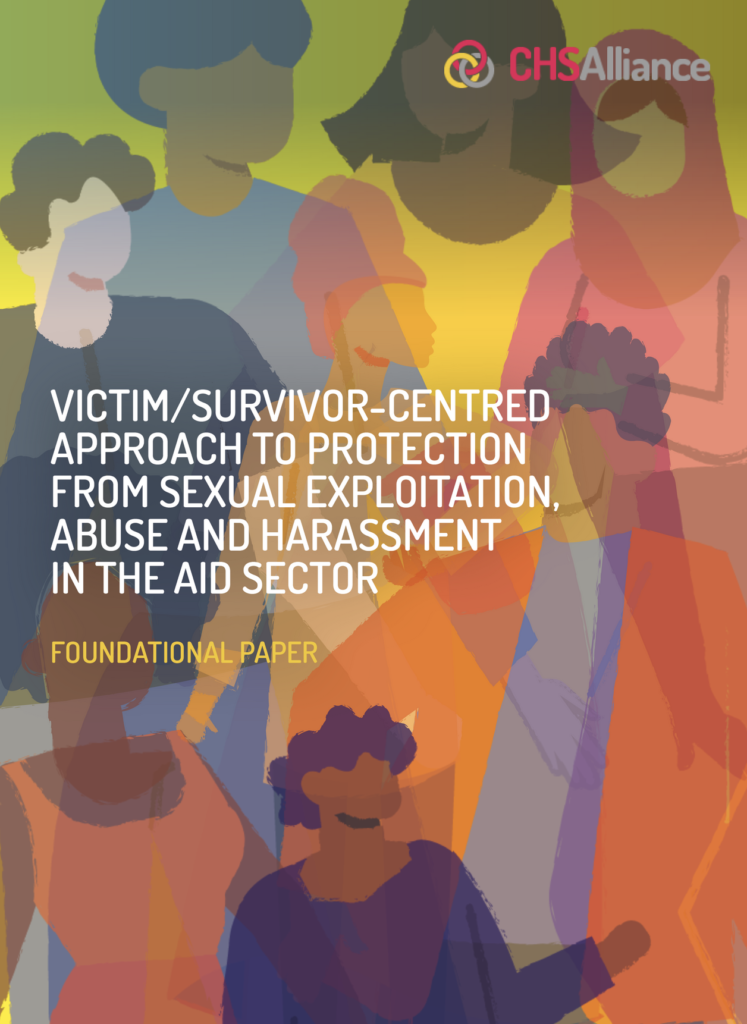Taking a victim centred approach to abuse in aid – the solution to silence?
Today, CHS Alliance, with support from the Dutch Ministry of Foreign Affairs, launches a foundational paper which considers what a Victim/Survivor-Centred Framework for addressing SEAH might look like in a humanitarian or development organisation, and how it can be operationalised by aid actors.
Sexual exploitation, abuse, and harassment (SEAH) are among the most egregious failures of accountability in the aid sector. Rooted in gender and power inequality, SEAH is a manifestation of the abuse of power by aid actors towards the people they serve. Current protection from SEAH (PSEAH) practice has emerged from compliance processes often developed with the needs of the organisation – rather than the perspective of the victim/survivor – as a starting point.
The time has come to shift this focus.
PSEAH should be delivered using a victims/survivor-centred approach. One that is focused on the needs, preferences and rights of the person who has been failed and left with their life fundamentally changed forever.
Being a victim of any form of sexual exploitation, abuse or harassment changes you, the way you view yourself and the way you see the world. It also changes the way that other people see you, at least from the moment they find out about the victimisation. Then there is the issue of what is said and not said; the power and control of silence. To whom does silence belong? The victim? The perpetrator? The organisation?
Silence is denial, fear, guilt, coping, resistance but also a justification for inaction and cover up. Silence is a choice, silence takes agency. As the African proverb goes “silence cannot be misquoted”. Silence is arguably the single biggest challenge confronting all of us involved in protecting people from SEAH in aid, as advocates, practitioners, policy and decision makers.
Historically, the solution to silence for our sector has been reporting. Reporting has long been the gateway to accountability for SEAH. But as years’ worth of accountability data shows, relying on reporting is not a silver bullet. We need new and better systems to detect, predict and prevent SEAH, as well as changing how people are treated after they report.
When people master the courage to come forward and report SEAH and we fail them, we embolden perpetrators, foster organisational impunity and undermine public trust. We fail because the PSEAH process is unjustifiably complex, capacities are inadequate, and politics is more important than people. As a sector we need to get better at making PSEAH processes simpler and more convenient for communities. This means committing to and delivering a victim/survivor centred approach to SEAH at personal and organisational level to better serve those colleagues have harmed, and the prevention systems failed.
The concept of victim/survivor-centred approaches (VCA) is also sometimes referred to as a victim’s rights approach. I argue that semantics do not matter because these concepts mean little outside the English-speaking world anyway. What is important is the shift in attitude and procedures that organisations must make when applying such an approach.
VCA is a process that is holistic, trauma informed, relevant to the local context, co-designed by communities, and informed by the lived experience of victims/survivors.
This task cannot be left to aid actors alone and a VCA process does not end with case closure but with redress and compensation.
There is much scope for learning in the sector on how to apply VCA so that organisations can be safer for – and more accountable to – victims/survivors.
This why is why CHS Alliance, supported by the Dutch Ministry of Foreign Affairs, is launching a foundational paper which considers what a Victim/Survivor-Centred Framework for addressing what PSEAH might look like in a humanitarian or development organisation, and how it can be operationalised by aid actors.

The paper maps the journey of a victim/survivor from violation to redress, exploring the challenges, existing best practice, and how a victim/survivor-centred approach could be operationalised and delivered by humanitarian and development actors.
I hope that this paper will inspire and inform the adaptation of existing PSEAH policies and procedures across the aid sector so that, collectively, we can better serve victims/survivors and become more accountable to people affected by crises.
Read the paper. To discuss how to take forward this important work, email CHS Alliance’s Project Manager, Martina Broström.

